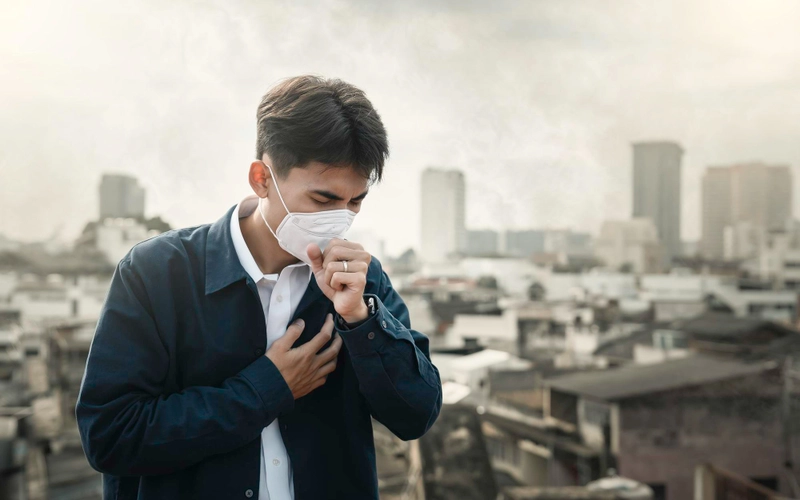- Published on: Jul 25, 2022
- 3 minute read
- By: Secondmedic Expert
Azithromycin Tablet Macrolide Antibiotics - A Comprehensive Guide To Uses, Side Effects, And More
In a world where bacterial infections can strike at any time, having a reliable antibiotic on hand is crucial. Azithromycin tablets, classified as macrolide antibiotics, have emerged as a frontline defense against a myriad of infections. From its uses to potential side effects, we delve into the depths of this wonder drug, shedding light on its benefits, risks, and the convenience of accessing it through online platforms.
Azithromycin Tablets – An Overview
Azithromycin, a member of the macrolide antibiotic family, is a potent weapon in the fight against bacterial infections. Marketed under various brand names, this antibiotic has gained popularity due to its broad-spectrum effectiveness against a wide range of bacteria.
Azithromycin Uses – A Multifaceted Approach
Azithromycin's versatility is one of its standout features. From respiratory tract infections and skin infections to sexually transmitted diseases, this antibiotic plays a pivotal role in combating bacterial invaders. Its mechanism of action involves inhibiting bacterial protein synthesis, making it a formidable force against various strains.
When it comes to respiratory infections, azithromycin is often prescribed for conditions like bronchitis, pneumonia, and sinusitis. Its ability to concentrate in the lungs makes it particularly effective in tackling respiratory pathogens.
In the realm of skin infections, azithromycin proves its mettle against the likes of cellulitis and impetigo. Its ability to penetrate skin tissues ensures a targeted attack on bacterial culprits, facilitating a quicker recovery.
Sexually transmitted diseases such as chlamydia and gonorrhea also succumb to the power of azithromycin. Its effectiveness in single-dose regimens makes it a convenient choice for treating these infections.
Azithromycin Tablet – Your Shield Against Respiratory Ailments
When it comes to respiratory infections, azithromycin tablets take center stage. These tablets, available in various strengths, offer a convenient and effective way to combat bacterial invaders. Whether prescribed for a short course or a longer duration, azithromycin tablets are designed to provide sustained relief, helping you breathe easy.
Exploring Azithromycin Side Effects – What You Need to Know
While azithromycin is a potent ally in the battle against bacterial infections, it's essential to be aware of potential side effects. Like any medication, azithromycin may cause adverse reactions in some individuals.
Common side effects include nausea, diarrhea, abdominal pain, and headache. These symptoms are usually mild and transient, resolving on their own as the body adjusts to the medication. However, if these side effects persist or worsen, it's crucial to seek medical advice.
In rare cases, azithromycin may cause more serious side effects, such as liver problems or allergic reactions. If you experience yellowing of the eyes or skin, persistent nausea or vomiting, or signs of an allergic reaction (e.g., rash, itching, swelling), seek immediate medical attention.
Azithromycin Side Effects – Navigating the Potential Risks
Understanding the potential risks associated with azithromycin is paramount for informed decision-making. It's crucial to note that the majority of individuals tolerate azithromycin well, and serious side effects are rare. However, as with any medication, the key lies in being vigilant and seeking prompt medical attention if any concerning symptoms arise.
Ordering Medicine Online – A Convenient Solution
In today's fast-paced world, convenience is a prized commodity. The ability to order medicine online has revolutionized the way we access essential medications. Azithromycin tablets, with their widespread use, are no exception.
Ordering azithromycin online provides a hassle-free solution for those in need. With just a few clicks, you can have this essential antibiotic delivered to your doorstep. This convenience is especially valuable when dealing with infections that require prompt treatment.
Online Doctor Consultation – Bridging the Gap Between You and Expert Advice
The digital age has brought about a transformative shift in healthcare access. Online doctor consultation services offer a bridge between you and expert medical advice. When considering azithromycin or any other medication, consulting with a healthcare professional online provides a convenient and efficient way to address your health concerns.
Whether you're seeking a prescription for azithromycin or simply want guidance on its use, online doctor consultations offer a personalized approach to healthcare. This virtual interaction ensures that you receive expert advice without the need for a physical visit to a clinic.
Azithromycin Tablet – Your Accessible Ally in the Fight Against Infections
The accessibility of azithromycin tablets is a game-changer in the realm of antibiotic therapy. Whether you're dealing with a respiratory infection, skin ailment, or a sexually transmitted disease, having this reliable ally within reach is invaluable.
In conclusion, azithromycin tablets stand as a testament to the advancements in antibiotic therapy. From their multifaceted uses to the potential side effects, understanding the nuances of this macrolide antibiotic is essential for informed healthcare decisions. With the added convenience of ordering medicine online and seeking expert advice through virtual consultations, the power to protect yourself against bacterial infections has never been more accessible. Embrace the convenience, but do so with knowledge and responsibility, ensuring that azithromycin remains the potent and reliable ally it was designed to be.
Read FAQs
A. Common side effects of azithromycin include nausea, diarrhea, abdominal pain, and headache. These are usually mild and temporary, but if they persist or worsen, it's advisable to seek medical advice promptly.
A. Azithromycin is a versatile antibiotic used to treat a wide range of bacterial infections. It is commonly prescribed for respiratory tract infections (e.g., bronchitis, pneumonia), skin infections, and sexually transmitted diseases (e.g., chlamydia, gonorrhea). Its effectiveness and broad-spectrum nature make it a popular choice for various infections.
A. The best use of azithromycin depends on the specific bacterial infection being treated. It is crucial to follow the prescribed dosage and duration recommended by a healthcare professional.
Our Services
Request A Callback
Recent Posts
High Blood Pressure: Everything You Need to Know
Apr 24,2025










